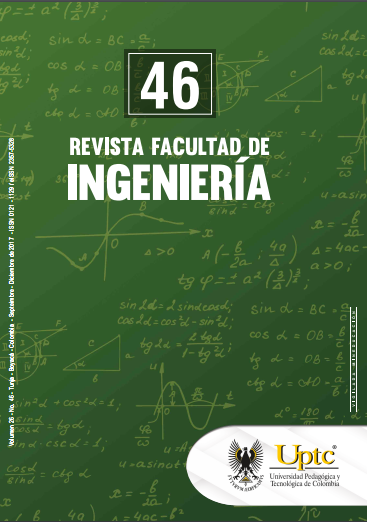Causal analysis procedure focused on small software development organizations

Abstract
Very Small Entities (VSE) dedicated to software development lack of enough resources to adopt causal analysis practices, defined in models as CMMI, due to their complexity and costs. It is important to detect the generated defects in the development process, and to make a systematic analysis aimed at determining its causes. However, identifying those root causes is an arduous task, and failing to do so leads to wrong decisions that either fail to solve the problem or even make it worse. On this basis, this paper proposes a causal analysis procedure focused on small organizations PAC-DS (according to its initials in Spanish), which includes activities aimed at identifying the defects causes. After its evaluation in a preliminary case study, the utility of the procedure was evidenced.
Keywords
Causal Analysis, Software Engineering, Software Process Improvement, Small Software Development Organizations
References
- G. Czibula, Z. Marian, and I. G. Czibula, “Software defect prediction using relational association rule mining,” Inform. Sci. an Int. J., vol. 264, pp. 260-278, 2014. DOI: https://doi.org/10.1016/j.ins.2013.12.031
- C.-P. Chang, and C.-P. Chu, “Defect prevention in software processes: An action-based approach,” J. of Syst. and Softw., vol. 80 (4), pp. 559-570, Apr. 2007. DOI: http://doi.org/10.1016/j.jss.2006.09.009. DOI: https://doi.org/10.1016/j.jss.2006.09.009
- M. G. S. Gonçalves, “MiniDMAIC: An Approach for Causal Analysis and Resolution in Software Development Projects,” in Advances in Comput. and Inform. Sci. and Eng., 2008, pp. 166-171. DOI: http://doi.org/10.1007/978-1-4020-8741-7_30. DOI: https://doi.org/10.1007/978-1-4020-8741-7_30
- M. Kalinowski, G. H. Travassos, and D. N. Card, “Towards a Defect Prevention Based Process Improvement Approach,” in 34th Euromicro Conf. Softw. Eng. and Advanced Applicat., 2008, pp. 199-206. DOI: http://doi.org/10.1109/SEAA.2008.47. DOI: https://doi.org/10.1109/SEAA.2008.47
- D. N. Card, “Learning from Our Mistakes with Defect Causal Analysis,” IEEE Softw., vol. 15 (1), pp. 56-63, 1998. DOI: http://doi.org/10.1109/52.646883. DOI: https://doi.org/10.1109/52.646883
- M. Kalinowski, D. N. Card, and G. H. Travassos, “Evidence-Based Guidelines to Defect Causal Analysis,” IEEE Softw., vol. 29 (4), pp. 16-18, Jul. 2012. DOI: http://doi.org/10.1109/MS.2012.72. DOI: https://doi.org/10.1109/MS.2012.72
- M. Leszak, D. E. Perry, and D. Stoll, “A case study in root cause defect analysis,” in Proc. 2000 Int. Conf. on Softw. Eng. (ICSE), 2000, pp. 428-437. DOI: http://doi.org/10.1145/337180.337232. DOI: https://doi.org/10.1145/337180.337232
- F. J. Pino, F. García, and M. Piattini, “Software process improvement in small and medium software enterprises: a systematic review,” Softw. Quality J., vol. 16 (2), pp. 237-261, 2008. DOI: http://doi.org/10.1007/s11219-007-9038-z. DOI: https://doi.org/10.1007/s11219-007-9038-z
- F. J. Pino, M. Piattini, and G. H. Travassos, “Managing and developing distributed research projects in software engineering by means of action-research,” Revista Facultad de Ingeniería Universidad de Antioquia, no. 68, pp. 61-74, 2013.
- Business Process Model and Notation (BPMN), Object Management Group, Inc. (OMG), 2011. Available: http://www.omg.org/spec/BPMN/2.0.
- S. Arreche, and S. Matalonga, “Tools for defect causal analysis: A systematic literature review,” in 7th Iberian Conference on Information Systems and Technologies (CISTI), 2012, pp. 1-7.
- T. O. A. Lehtinen, et al., “A tool supporting root cause analysis for synchronous retrospectives in distributed software teams,” Information and Software Technology, vol. 56 (4), pp. 408-437, Apr. 2014. DOI: http://doi.org/10.1016/j.infsof.2014.01.004. DOI: https://doi.org/10.1016/j.infsof.2014.01.004
- T. O. A. Lehtinen, M. V. Mäntylä, and J. Vanhanen, “Development and evaluation of a lightweight root cause analysis method (ARCA method) – Field studies at four software companies,” Information and Software Technology, vol. 53 (10), pp. 1045-1061, Oct. 2011. DOI: http://doi.org/10.1016/j.infsof.2011.05.005. DOI: https://doi.org/10.1016/j.infsof.2011.05.005
- P. Jalote, and N. Agarwal, “Using defect analysis feedback for improving quality and productivity in iterative software development,” in Proc. 3rd International Conference on Information and Communications Technology, 2007, pp. 703-713.
- C. R. Nelms, “The problem with root cause analysis,” in 8th IEEE Human Factors and Power Plants and HPRCT 13th Annual Meeting, Aug. 2007, pp. 253-258. DOI: http://doi.org/10.1109/HFPP.2007.4413215. DOI: https://doi.org/10.1109/HFPP.2007.4413215
- H. Jabrouni, et al., “Continuous improvement through knowledge-guided analysis in experience feedback,” Engineering Applications of Artificial Intelligence, vol. 24 (8), pp. 1419-1431, Dec. 2011. DOI: http://doi.org/10.1016/j.engappai.2011.02.015. DOI: https://doi.org/10.1016/j.engappai.2011.02.015
- N. Honda, and S. Yamada, “‘Defect Root-Cause Analysis and 1+n Procedure’ technique to improve software quality,” International Journal of System Assurance Engineering and Management, vol. 3 (2), pp. 111-121, Jun. 2012. DOI: http://doi.org/10.1007/s13198-012-0118-5. DOI: https://doi.org/10.1007/s13198-012-0118-5
- K. Y. Zúñiga, “Procedimiento de análisis causal enfocado en pequeñas organizaciones de desarrollo software,” Thesis, Universidad del Cauca, Popayán, Colombia, 2015.
- R. K. Yin, Case study research: Design and methods, 5th ed. Newbury Park CA: Sage publications, 2014.
- Project Management Institute, "Project risk management," in A guide to the project management body of knowledge (PMBOK Guide), 4th ed. Newtown Square PA: Project Management Institute, Inc., 2008, pp. 281.